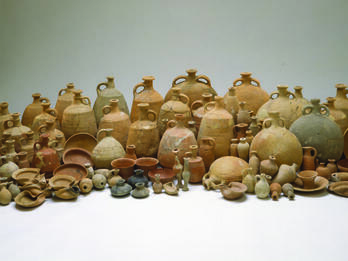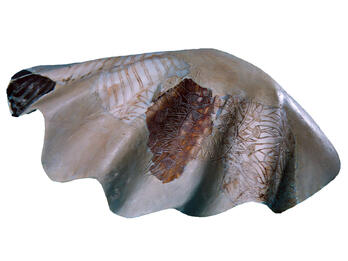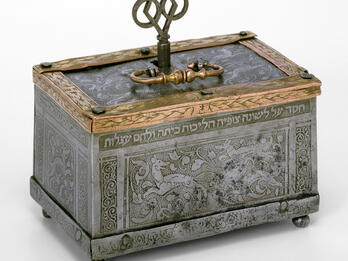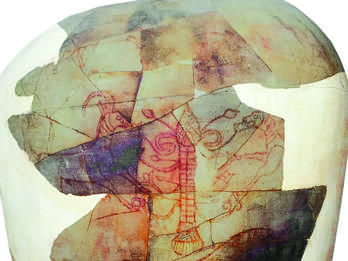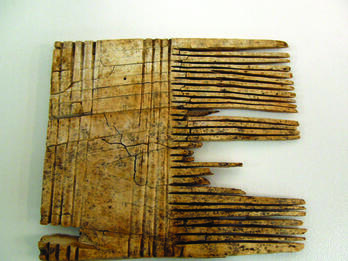Showing Results 21 - 30 of 43
Restricted
Image
About a thousand items that had accumulated over time were found in the repository of Cave 25 in the Ketef Hinnom cemetery. They included jewelry, ivory and bone inlays, arrowheads, tools, and a large…
Places:
Ketef Hinnom, Land of Israel (Jerusalem, Israel)
Date:
Iron Age IIC–Early Persian Period, 7th–5th Centuries BCE
Subjects:
Categories:
Restricted
Image
Engraved tridacna (clam) shells like this one from Arad seem to have been used as cosmetic containers in the Near East and Mediterranean worlds in the late seventh and early sixth centuries BCE. This…
Places:
Arad, Land of Israel (Tel ‘Arad, Israel)
Date:
Iron Age IIC, Second Half of 7th–Early 6th Century BCE
Subjects:
Categories:
Restricted
Image
The ketubah is a religious and legal contract of marriage. Traditionally, it outlines the conjugal and economic conditions of a marriage and is written in Aramaic. This ornate one from Isfahan, Iran…
Contributor:
Artist Unknown
Places:
Isfahan, Iran
Date:
1887
Subjects:
Categories:
Restricted
Image
This exquisite jewelry box was crafted in Nuremberg, Germany, before 1540 and given to a bride for her wedding. Etched in steel, copper-plated, and partly gilt, the panels, on four sides and the lid…
Contributor:
Artist Unknown
Places:
Free Imperial City of Nuremburg, Holy Roman Empire (Nuremberg, Germany)
Date:
Before 1540
Subjects:
Categories:
Restricted
Text
Belonging to Pekah. Semadar.
Places:
Hazor, Land of Israel (Tel Hazor, Israel)
Date:
Middle or Second Half of 8th Century BCE
Subjects:
Categories:
Restricted
Text
Jar of the gate.
Places:
Kinneret, Land of Israel (Tel Kinrot, Israel)
Date:
Late 8th Century BCE
Subjects:
Categories:
Restricted
Image
The top register of this plaque from Hazor depicts a crouching winged sphinx wearing the double crown of Upper and Lower Egypt. The lower register shows two stylized three-tiered palmettes. The…
Places:
Hazor, Land of Israel (Tel Hazor, Israel)
Date:
Iron Age IIB, first half of 8th century BCE
Subjects:
Categories:
Restricted
Image
Since chairs and beds were valuable items and not found in average homes (people usually sat on the floor and slept on mats), it is possible that terra-cotta models like this one from Lachish…
Places:
Lachish, Land of Israel (Tel Lakhish, Israel)
Date:
Iron Age IIB, 8th Century BCE
Subjects:
Categories:
Restricted
Image
In this detail from the left side of a pithos (storage jar) from Kuntillet Ajrud, two ibexes are eating the flora of a schematic tree, all set above a striding lion. These common motifs are typically…
Places:
Kuntillet Ajrud, Land of Israel (Kuntillat Jurayyah, Egypt)
Date:
Iron Age IIB, Late 9th–Early 8th Century BCE
Subjects:
Categories:
Restricted
Image
This comb is from a Philistine site at Ekron, but combs looked the same throughout the region.
Places:
Ekron, Land of Israel (Jerusalem, Israel)
Date:
Iron Age I, 11th Century BCE


